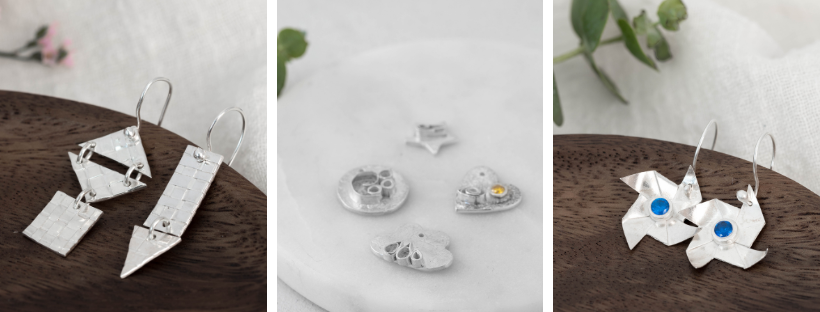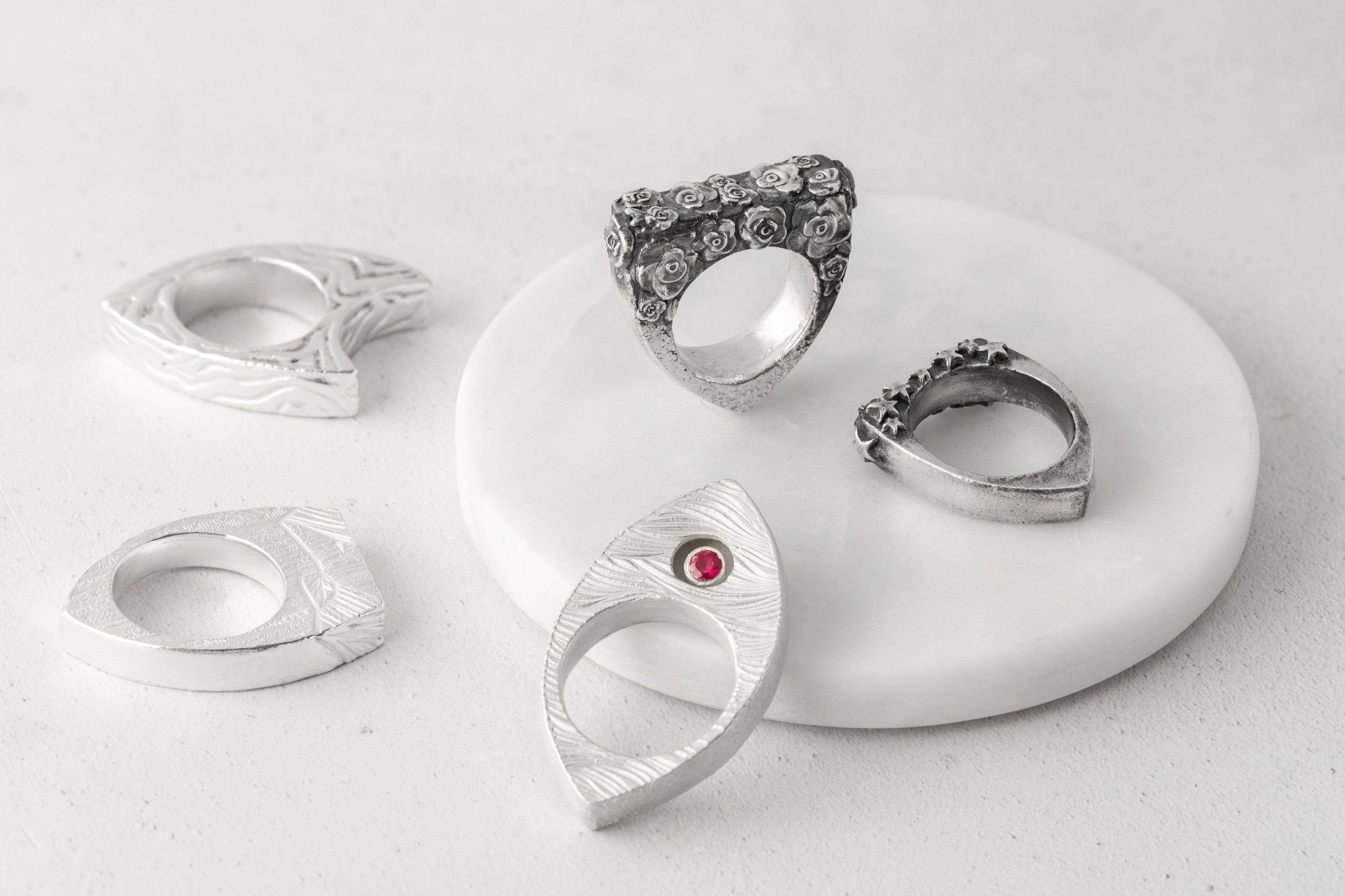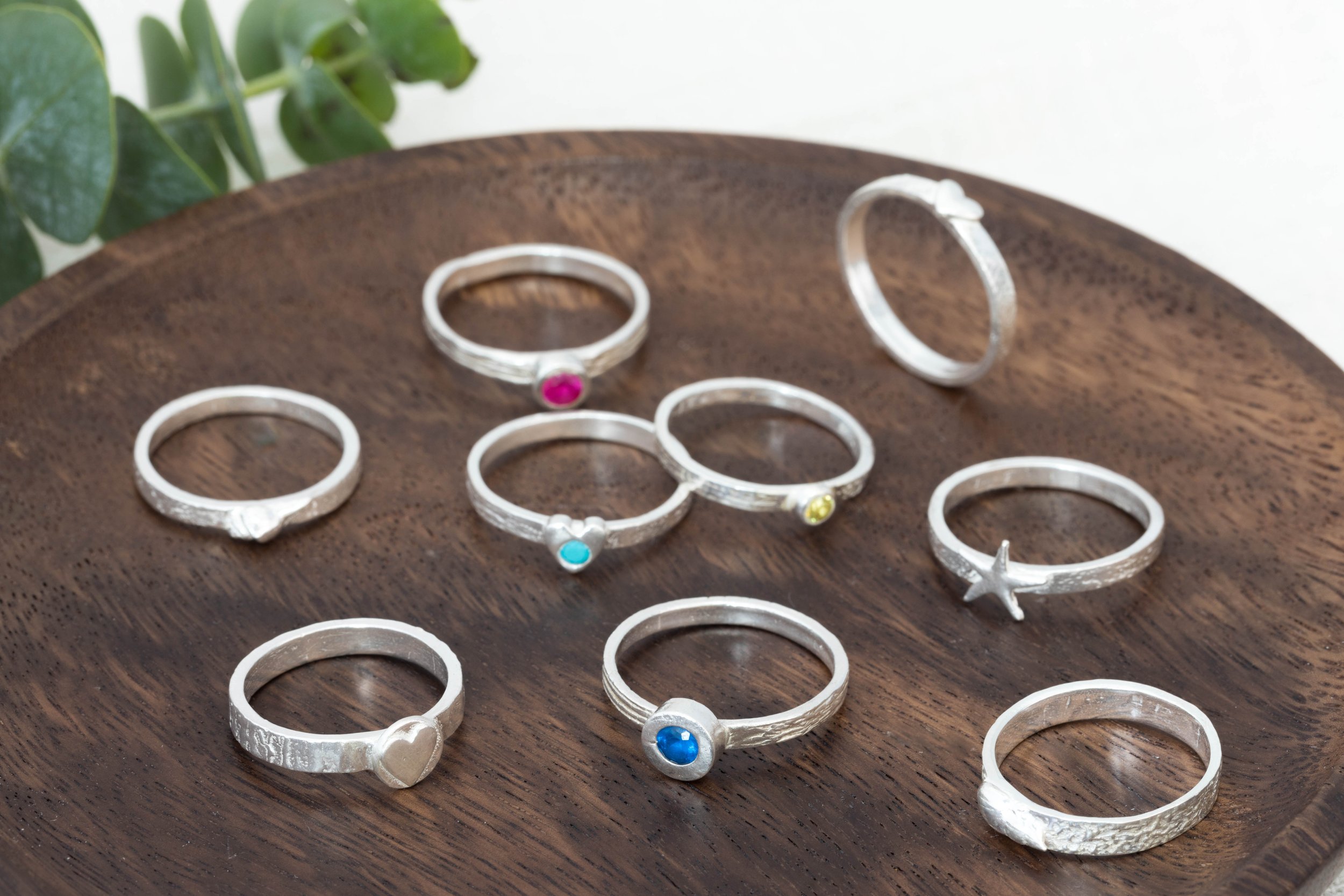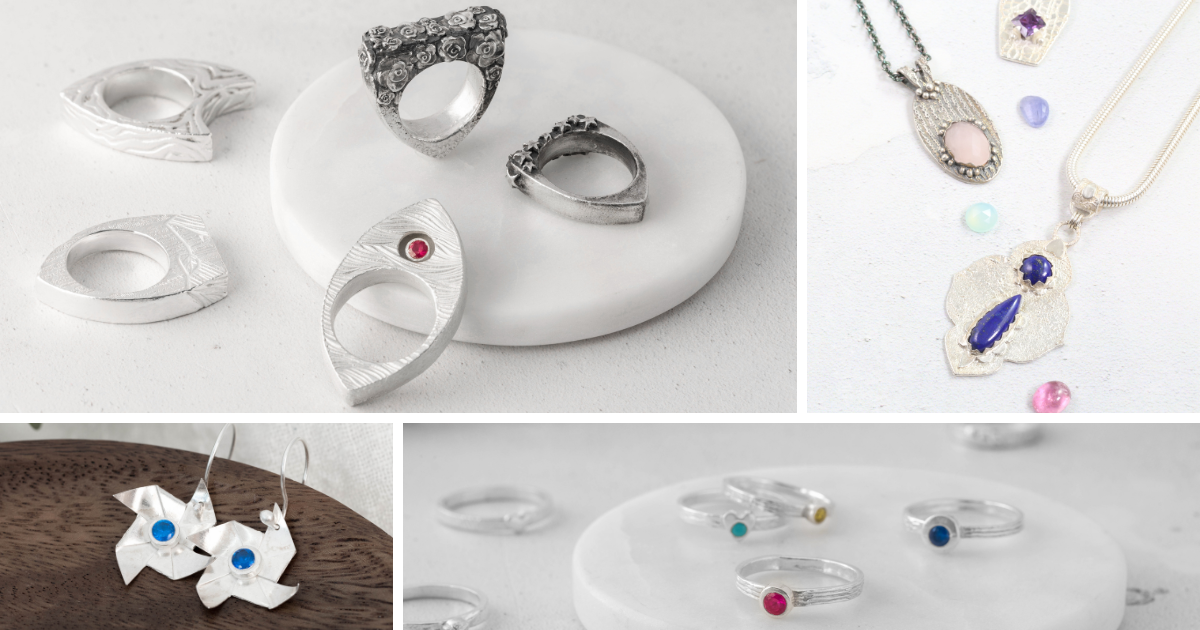silver metal clay 101 - answers to some frequently asked questions
There are many ways to make jewellery from metal. One way is to use an exciting material called metal clay. But what is metal clay and how is it used to make jewellery? Here are answers to your questions about metal clay.
What is metal clay?
Silver metal clay is a manufactured material made using recycled silver particles, an organic plant-based binder to bind the particles together and some water. This material can be moulded, shaped and textured. It is then dried (it can be left to dry naturally or put on a heated surface to dry). It is fired using a jewellers torch (a creme brule torch will do!) or in a jewellers kiln. The result is a piece of metal of hallmark quality.
Silver metal clay tends to be the most commonly used metal but other metals are available. They are similar in the way they are manufactured and the method of working with them.
What metals are available as metal clay?
Lots of different metals are available as metal clays.
Silver including fine silver (999) and sterling silver (925)
Gold
Bronze
Copper
Steel
Are all available in clay form.
The different metals have different methods of firing so for beginners we recommend Art Clay Silver as it can be fired with a torch. Other clays need to be kiln fired.
How does metal clay turn into solid metal?
The clay is moulded, shaped, textured etc to make jewellery or other objects
The clay is left aside to dry - either on a hot surface e.g. hot plate, food dehydrator, on top of a radiator etc
Once dry, the clay can be filed and finished ready for firing
The clay is then fired. For silver clay, small pieces around the size of a £2 coin or smaller can be fired with a jeweller’s torch. Larger or more complex pieces tend to be fired in a jeweller’s kiln. During the firing process, the organic binder in the clay burns away so a small flame is seen briefly. The piece is then heated for 3 minutes. During this heating phase the metal particles form together - they sinter to make one solid piece of silver.
Once cool, the silver can be polished. Findings e.g. jump rings and earrings wires are added and the pieces are ready to wear
If selling silver clay jewellery, pieces over 7.78g need to be sent to one of the UK Assay offices for hallmarking. You can find a guide to hallmarking for metal clay artists here >
when I buy silver metal clay, what does it look like?
The most used form of clay is silver clay and it comes in four different forms:
Lump clay
This is the kind of clay that you would expect, it comes in a sealed packet ready to use
Paste/slip
Paste is the same as the lump clay but a thinner consistency, a bit like thick yoghurt. This is used for creating surface pattern and for sticking pieces of clay together. It is also known as slip which is a term used in pottery.
Syringe
The manufacturers also sell silver clay in a syringe. The make up of this is a little different as it has more binder in it. It can be used for surface decoration, filling in small cracks, joining pieces etc
Paper metal clay
Metal clay also comes in paper form. This is a dry flat sheet that can be used for lots of different designs including cutting into strips and weaving, quilling and origami.
what are the essential tools for making jewellery from metal clay?
Check out this video where I take you through my essential guide to silver metal clay tools and materials.
What are the benefits of making jewellery with silver metal clay?
Jewellery can be made from metal sheet, wire, clay and wax and each of these methods have its own benefits.
The benefits of working with silver metal clay are:
It’s easy to do from home - there is not much equipment that you need to get started
The tools you need to start are not expensive
The tools are not bulky - you generally don’t need a lot of space and you can work from your kitchen table easily
The clay is perfect for moulding, texturing, carving and sculpting
There’s zero waste as any dry clay designs you don’t like can be ground back up, water added and made back into clay
Clay is easy to use for those with dexterity issues e.g. arthritis. Unlike traditional methods where there is a lot of sawing, filing, hammering etc
Is silver clay real silver/Can metal clay jewellery be hallmarked?
Yes, silver clay is real silver. Once the clay is fired it is metal and it can be assayed. You can find out more about this process here
Does silver clay tarnish?
Eventually yes. All silver will tarnish over time and can easily be polished again. Fine silver clay (999) has less copper content so tends to tarnish less quickly.
does metal clay shrink when fired?
Yes. The organic binder in the clay burns away when it is fired so there is some shrinkage. The amount depends on the clay type you are using so it’s good to check the instructions on the clay you are using. As a guide, the fine silver clays shrink between 8 and 10%.
Is silver clay TOXIC?
No. You could eat silver clay and there would be no harmful effects because it is all organic based (although we don’t advise it!). There is no need to wear gloves when working with silver clay. Some people do use hand protection when using copper or bronze clays. Glove in a Bottle is a popular choice.
do i need to wear a mask when torch-firing metal clay?
When torch-firing silver clay, a small amount of flame and smoke is seen for a few seconds which is the organic plant-based binder in the clay burning off. This is similar to the amount of smoke you might get from blowing out a candle. There is no requirement to wear a mask when firing but as always, consider your own risks. If you suffer from asthma or breathing issues you may choose to. Once the binder has burnt away, which takes a matter of seconds, there are no fumes or smoke.
Box Rings. These are hollow formed and made from silver clay. This course is taught as part of our online Diploma in Silver Metal Clay
Is silver clay strong?
The main type of silver clay that is used is made of fine silver. This is also known as 999 which means for every 1000 particles, 999 are silver and 1 is copper. Sterling silver is also known as 925 which is 925 parts silver to 75 parts copper and other alloys. Fine silver is a little softer than sterling because the copper content makes it stronger. However, fine silver is still a strong metal and is great for making jewellery.
Is silver clay eco-friendly?
There are lots of considerations when thinking about whether something is eco-friendly. It is a manufactured material and the main brands are made in Japan. But on the whole, I would say that silver clay is an eco-friendly product because:
The silver in silver clay is 100% recycled from X-rays, photographic industry, electronic devices etc
The binder binding the silver particles together is an organic plant-based binder
There is no waste with silver clay. Dry clay can be reconstituted - ground up to be made into clay again by adding water so nothing needs to be discarded - we can recycle it ourselves.
Can you make rings from metal clay?
Yes! The stacker rings photographed above are all made from Art Clay Silver as are the box rings pictured below.
DIPLOMA IN SILVER METAL CLAY
If you are hooked on metal clay and would like to learn more then do check out the one-year online Diploma in Silver Metal Clay starting in September 2023. This course takes you quickly from beginners level to more advanced projects and techniques with masterclasses taught by world-renowned metal clay artists including Julia Rai, Anna Mazon, Tracey Spurgin and Joy Funnell. You can find out more about the course on the button below




